Surviving 10-storey-high 'monster waves'
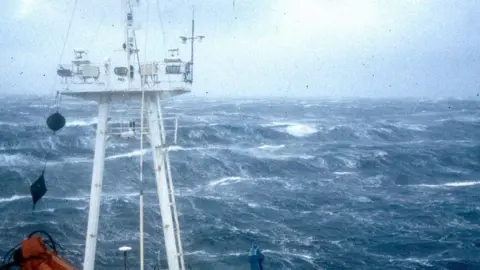 National Oceanography Centre
National Oceanography CentreOn a stormy February night, far up in the North Atlantic, "monster waves", the height of a 10-storey building, hit the research ship Discovery.
It was the year 2000, and scientists onboard were forced to sit through the event - hoping and praying for the seas to calm down.
The vessel survived what researchers still believe were the biggest waves ever directly recorded in the open ocean, with the largest measuring more than 29m (95ft) high.
Prof Penny Holliday - then a student at the University of Southampton - who was onboard the ship, said it was an "incredible experience", adding that nobody on Discovery could "afford to be afraid".
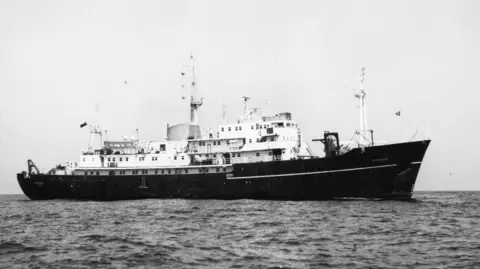 National Oceanography Centre
National Oceanography CentreResearchers onboard the ship had been studying the properties of the open ocean when conditions took a turn for the worse.
"The first week or so of the expedition the weather was fine. We got lots of nice work done - and then the winds really started to build," Prof Holliday told BBC Radio Solent.
"They built and built, and we ended up sitting for about five days hove to - which means you point the ship into the wind and the waves - waiting for the wind and the waves to calm down."
On the evening of 8 February 2000, the ship was about 250km (155 miles) off the west coast of Scotland in an area of ocean called the Rockall Trough when the storm reached its peak.
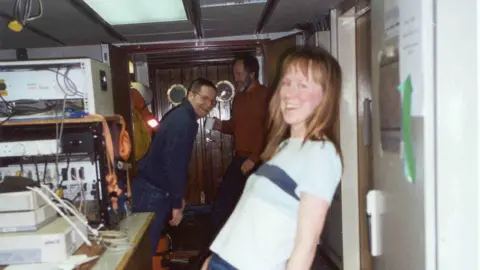 National Oceanography Centre
National Oceanography CentreProf Holliday, who was studying for a PhD at the University of Southampton at the time, said the "monster waves" just kept "growing and growing and the ship was all kind of closed down".
"We couldn't do any work - it was really quite an incredible experience because the sound of the wind and the size of the waves was just extraordinary," she said.
"None of the people on board had ever seen anything quite like that," Prof Holliday said.
"We learned, unfortunately, why very few ships go out and collect data in the winter."
People on board the ship were "thrown around" by the surges and some were hurt, but "by and large" people were "just trying to stay safe and waiting for it to pass, which it did eventually."
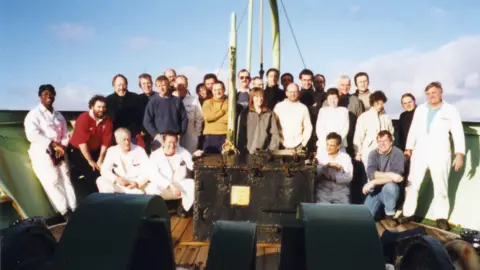 National Oceanography Centre
National Oceanography CentreUnable to get the information they had originally set out to acquire, the crew instead gathered data about the waves they had been battling.
Once back home, Prof Holliday and her team analysed the data and found that the waves had been the product of the fully-developed sea phenomena.
"Essentially, the waves were as big as they could get ever get under those wind conditions," she explained.
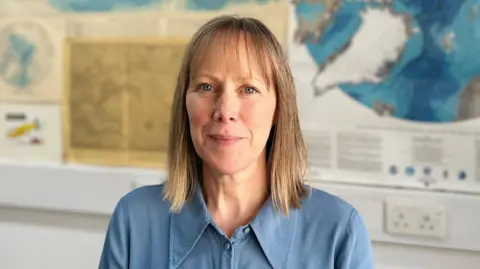 National Oceanography Centre
National Oceanography CentreResearchers found that the swells had formed off the coast of the Canadian province of Newfoundland, more than 1,000km (621 miles) away from the Discovery.
Part of the team's work was subsequently used to improve forecasts for people working in the open ocean, and understanding when big storms - such as the one the Discovery encountered - will be coming through.
Prof Holliday, who is now chief scientist of the National Oceanography Centre, based in Southampton, said the story was "great dinner party conversation".
"I think it brings to life the reality of doing ocean science - you become quite insignificant in the big wide open ocean," she added.
You can follow BBC Hampshire & Isle of Wight on Facebook, X (Twitter), or Instagram.
